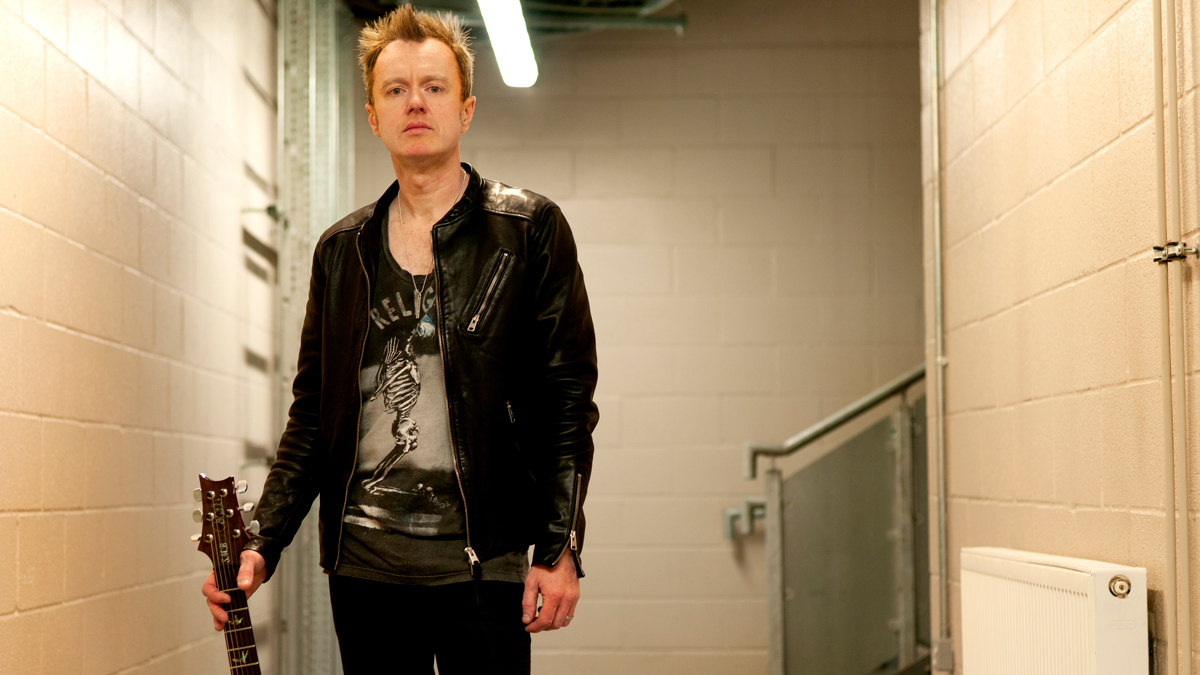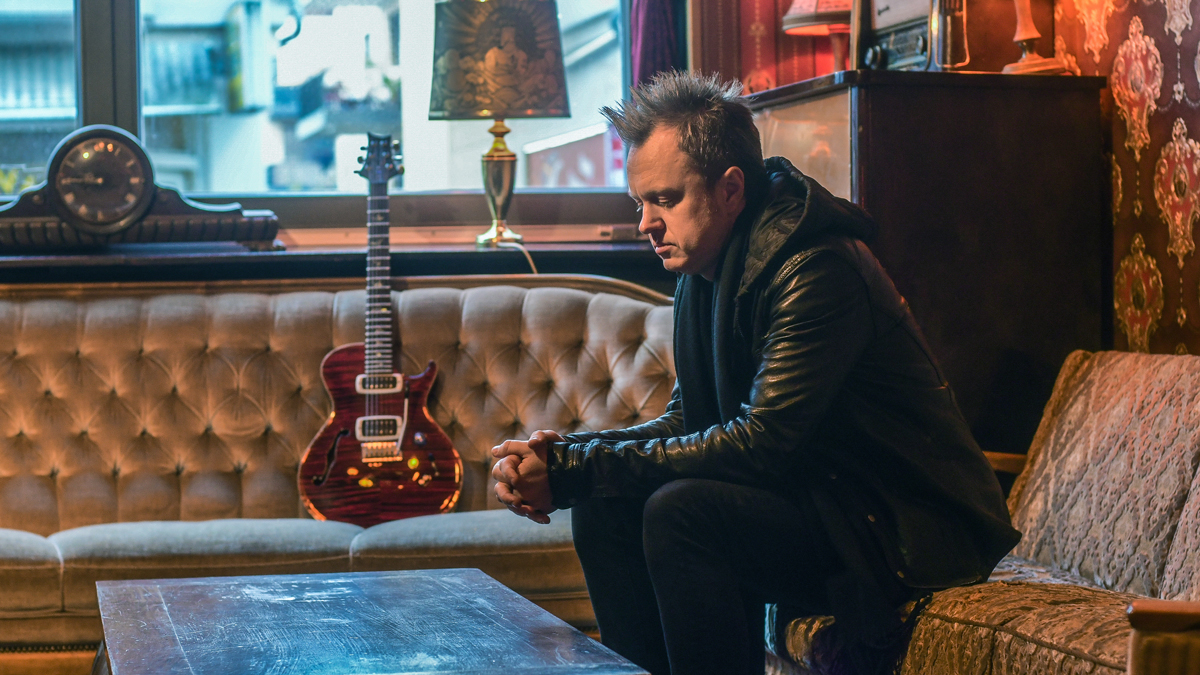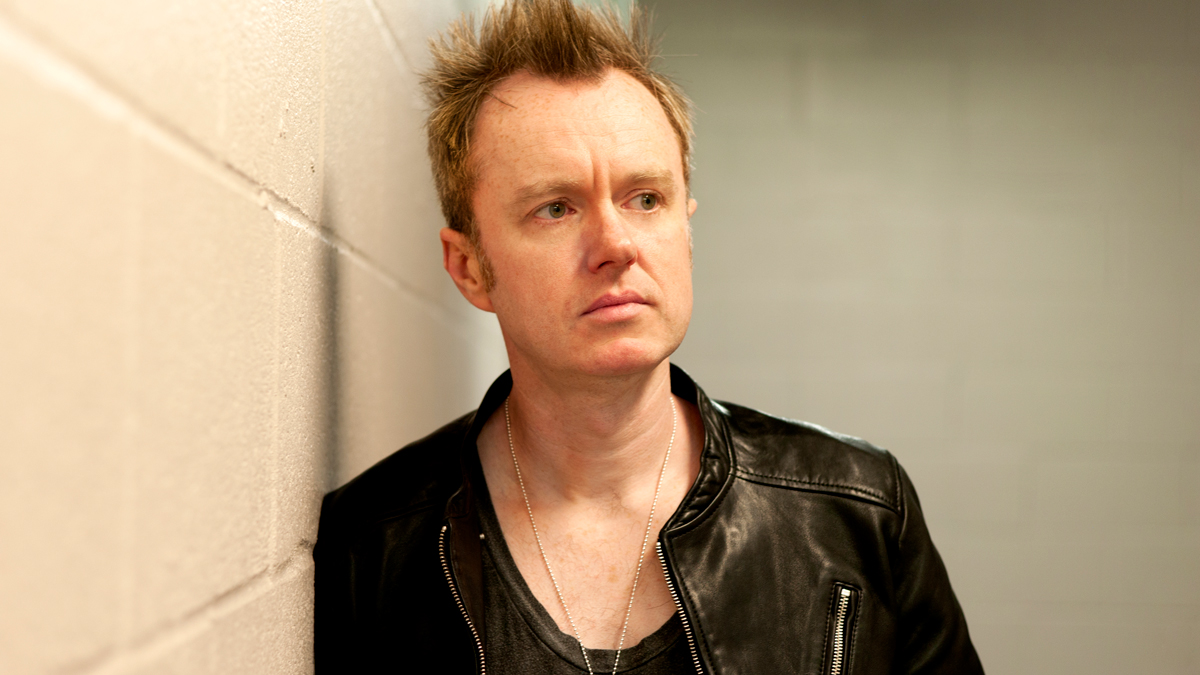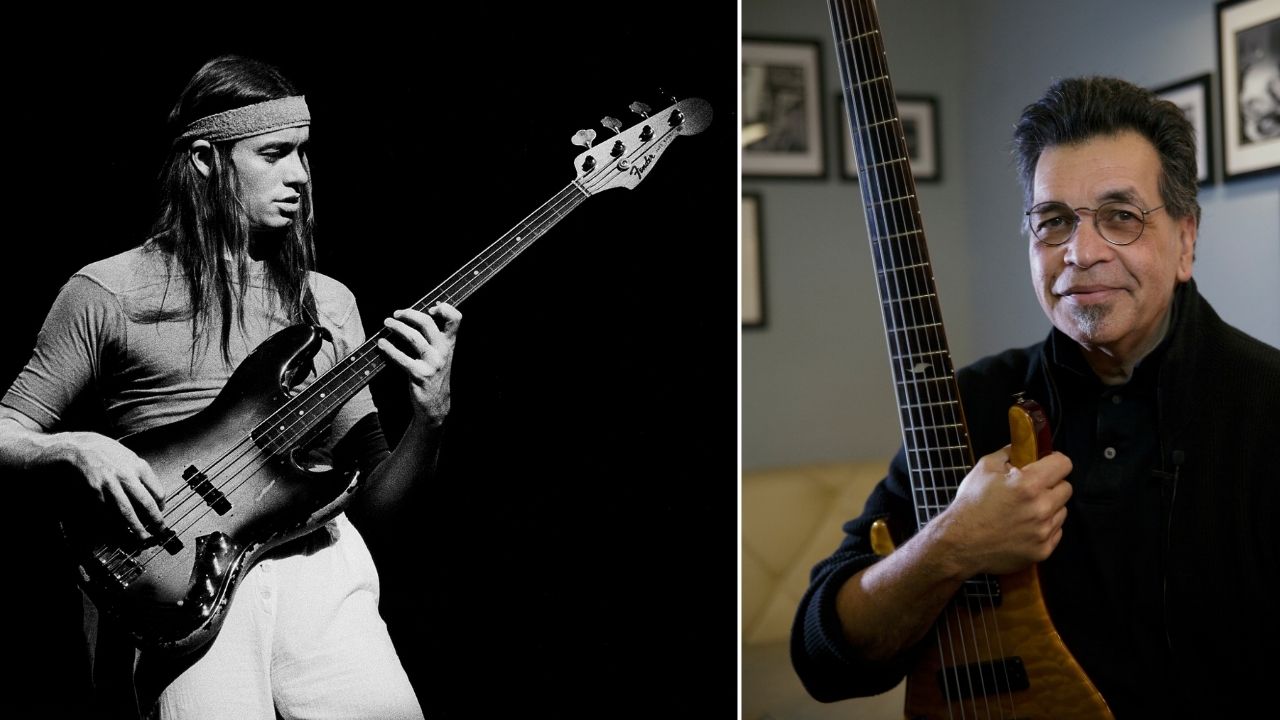Simon McBride on joining Deep Purple: “Steve Morse is an amazing guitarist, so I know I’ve got big boots to fill…”
The Northern Irish blues-rocker talks taking on one of rock's biggest gigs, shaking up his tones on new album The Fighter, and the one thing every guitarist needs to consider when writing guitar solos

At the tail end of March 2022, Deep Purple shared the news that guitarist Steve Morse would be taking a temporary hiatus from the group in order to support his wife, who is currently battling cancer.
“I am not leaving the band,” explained Morse in the official statement, adding that he hoped “after she gets a clean bill of health, I can re-join the tour”. The Deep Purple legend also extended a warm welcome to the man who will be filling his spot for the live shows – Northern Irish blues rock ace Simon McBride – praising him as a “certified world-class guitarist… whom everybody will surely be happy to hear”.
For McBride, who has previously toured with Deep Purple members Ian Gillan and Don Airey and become well-acquainted with the band in general, it’s the opportunity of a lifetime – but also understandably one born out of incredibly sad circumstances.
“To be honest, I’ve known about this for a while,” he explains, talking to Guitar World from his home studio, with various PRS and Fender guitars hanging on the walls behind him. “There was talk of it before, since the end of last year. Steve wants to do the shows obviously, because he is the guitar player in Deep Purple.
“It’s very unfortunate with his wife… so yeah, it’s very hard for him to leave and come over to Europe. It’s a bittersweet emotion for me, because it’s under sad circumstances, but on the other hand I’m also going ‘Yes!’ because it’s a dream opportunity. It’s a bizarre thing.”
As he goes on to explain, the initial discussions with Deep Purple felt surreal, to the point where McBride wasn’t too sure what to make of it. He agreed, like any guitar player would, but was careful not to get too attached to the idea and instead tread with caution. After all, it’s not every day you’re confronted with the prospect of playing in one of the most influential hard-rock bands of all-time.
“When they first mentioned it, I was like, ‘Yeah, okay, whatever…’ because I take everything with a pinch of salt these days,” McBride continues. “I thought if it happens, great, if it doesn’t, then don’t feel too let down. We knew for sure in March, so I said, ‘Wow, cool, this will be great fun!’ But it’s also not great… which makes it so weird. In the back of my mind, I know it’s happening under crappy circumstances.”
All the latest guitar news, interviews, lessons, reviews, deals and more, direct to your inbox!
For the fans, sad as they’ll be to miss out on Morse’s technical wizardry, McBride’s appointment is certainly one that makes sense – he has no shortage of talent and established a strong chemistry with each of the group’s members long ago.
“I’ve known the guys for a while,” adds McBride. “I’ve toured with Ian [Gillan] and Don [Airey] a fair bit over the years. I’ve also played with Roger [Glover] and [Ian] Paicey, so I’ve played with them all, just not at the same time! [laughs] Now I get to do that, and I’m very excited about it, running through all those classic iconic songs we all learn when we’re young. Now I get to play them as part of the band. Steve is an amazing guitarist, so I know I’ve got big boots to fill…”
What do you see as being the main challenges of the gig, technique-wise? Some of the unison lines between Steve and Don on the newer material can get pretty intense…
“I don’t think there’s too much that will be challenging for me. It’s mainly just remembering all the parts as a whole. It’s not like just learning a normal set with standard issue songs, which are verse/chorus/verse/chorus/solo and done. They have all these alternate endings and, as you said, those mad sections with unison lines.
“There are some solos that aren’t just standard solos; they’re more like creative pieces, so I’ll have to learn them exactly and remember. I’ve spent the last few weeks working on all of the stuff, taking it all into my brain. Whatever gig I’m doing, I always try to include a bit of myself where it works and also stick to the original solos as a mark of respect.”
And which solos might those be?
There are all sorts of things coming together to make Deep Purple sound like Deep Purple. I have to try and get onboard with that and bring the same sort of energy that Steve Morse would
“Well, there are some leads you just can’t get away with playing different, like Highway Star. I will just play it as is – what’s the point in trying anything else? I won’t come up with anything better. And some of Steve’s solos on the new stuff are also like that. I won’t be able to top them, so I’ll just learn them note-for-note.
“Fortunately, though, there’s nothing too technically complicated with it. And when I play with Don, we do a lot of stuff from the [’70s fusion supergroup] Colosseum II days, the Gary Moore stuff. Now that’s complicated, and can be a bit of a nightmare technique-wise. There tends to be a lot of notes flying around.
“To learn things, I don’t necessarily pick up the guitar for the first two weeks; I’ll just sit and listen to the songs over and over until I’m sick of listening to them. When I actually sit down with the guitar, I like to be able to nearly play it already just from familiarity, knowing the chords and what positions they’re being played in.
“I guess you could just say it’s all challenging, from timing to feel, there are all sorts of things coming together to make Deep Purple sound like Deep Purple. I have to try and get onboard with that and bring the same sort of energy that Steve would.”
You have a new solo album, The Fighter, that’s coming out soon. What exactly are we hearing on the tracks?
“The main guitar was my red PRS 408 Singlecut, which I don’t think they make anymore. That ended up on nearly everything. I also used a Telecaster for certain clean sounds, just to get that ’80s kind of bright and compressed thing. There’s a song called Show Me How to Love and the chorus part is really clean with delays and reverbs and chorus. I had about seven guitars for that one part – including two Telecasters on the bridge pickup, my PRS Silver Sky and my PRS Starla…
“I also used my PRS 245 on one track for more of a vintage Les Paul kind of thing. My main guitar has higher-output pickups whereas the 245 has the ’70s classic rock vibe with not a huge amount of output but bags of tone. I didn’t really use much beyond that. I’m not the kind of person who uses a guitar for each song.
“My main PRS is very versatile: it can do so many things, and though the pickups are hot you can still split them in different ways using the two switches. From rock to blues, metal and beyond, it can do everything.”
You’ve been using Victory amps a lot in recent years – is that still the case?
“Yeah, I used some of the Victory stuff on the album. There was the V30 and also a Super Kraken. I even used a Kemper, which maybe some people might be disappointed by, but in the studio they can be great tools. The line between real amps and digital stuff is getting very blurry. It can be hard to tell the difference sometimes. Having the Kemper there was very cool, because I could get some Vox AC30 kinds of sounds, or something more like a vintage Fender tone.
“On some of the riffs, like the track High Stakes, I’d use my 408 – which is basically a humbucker guitar into a Victory for that classic Marshall sound – as well as a Telecaster into a Vox AC30 profile.
“There’s something that happens when you layer up a humbucker guitar into a Marshall-style amp and single coils into something like a Vox. The Telecaster and Vox alone can be just nasty, but you blend those two together and the guitars seem to poke their head through the mix that bit more. I do that all the time for my big riffs, because it helps them sit in the track.”
Don’t Dare has some really interesting usage of sixth intervals served up with Led Zeppelin swagger, and some creamy fuzz for the solo, too…
“That song is a funny one. I actually wrote the riff about 15 years ago, but I didn’t know what to do with it. Everything I came up with sucked. For this album, I showed it to a singer-songwriter friend of mine. I asked him what he thought, he liked how it sounded and suggested where it should go. And it made my day… because I loved that riff.
“As you mentioned, it has that Zeppelin-y feel to it. The sixth intervals are also harmonized up the fretboard from halfway through. For the solo I got out this Octavia I use all the time, made by a German company called Vahlbruch who do a lot of different pedals. I just love this one. It’s always on my ’board because it sounds nasty.
“It does that classic thing where you switch to the neck pickup and play around the 12th fret, and you get that octave up vibe, but it also sounds filthy when you play chords on the bridge pickup. It’s the kind of sound I could have used for the whole record but no, thankfully I didn’t!”
Kingdom has some pretty colorful modulation at points. What were you using?
I like to keep my albums fresh in terms of my guitar tones. There’s nothing worse than hearing an album where it’s the exact same sound for every song
“I used my Uni-Vibe as well as some harmonizer stuff on the verse sections, just on the odd little lick here and there. For the vibe sounds, I used a Jam Pedals RetroVibe, which has two knobs and works great.
“I’m very simple when it comes to pedals. You can get Uni-Vibes with six knobs and it’s like, ‘I don’t know what to do with this!’ The Jam one is great – you plug in, choose your speed and depth and you’re off.”
Was there anything else of note on the ’board?
“I could talk all day about pedals! I have quite a bizarre old pedal that I use a bit, made by Pearl, as in the drum company. They used to be into pedals for a bit. They made this flanger and I used it on the track 100 Days, for the noisy solo in the middle, and the song King of the Hill. It’s not a normal flanger. When you play notes through it, that thing just goes bonkers. It’s total madness, but I love it.
“The only problem is that it’s old and not true bypass, so it’s very noisy. I don’t use it live, only on recordings. I also have a Hartman flanger I use live, which is another old one, and that’s also on this album.
“The reverbs and delays were done in post-production, because I record everything dry. I used some chorus effects, like the Boss Dimension-C, and some fuzz pedals for different tones. Actually, for the second solo in 100 Days, I did use a Boss DD-500 delay going into a fuzz pedal – I think it was the Keeley Monterey – with some overdrive from the amp. Normally I have my delays in the loop so that they’re crystal-clear, but for this part I wanted a distorted delay that was really thick and heavy.
“It’s a cool sound, though I wouldn’t use it all the time. I don’t tend to use fuzz a lot; it’s just on the odd solo over here. I like to keep my albums fresh in terms of my guitar tones. There’s nothing worse than hearing an album where it’s the exact same sound for every song. It’s better to mix it up a bit!”

There are some fast two-note-per-string pentatonic runs on tracks like The Fighter and Show Me How to Love, reminiscent of Eric Johnson’s approach to the scale and the modern players he influenced like Joe Bonamassa and Eric Gales…
“I grew up in the ’80s with all the three-note-per-string stuff. That was beaten into me because I guess it was what guitarists were doing back then. I could do that no problem. But then it got cooler to play two-note-per-string lines. Like you say, there are a lot of people doing that kind of stuff now like Bonamassa and Eric Gales, and it does stem from Eric Johnson.
“I didn’t want to go down the road of being a copy of players like that, but I wanted to learn more about different sequences. Obviously with Eric Johnson, a lot of it is in fives, which can sound really cool. Then there’s the classic Thin Lizzy one, which is threes, or you can try sequences of six. If you want to get really adventurous, you can try sequences of seven. Mixing sequences can be really good for learning this, as well as for phrasing in general…”
Because the accents change?
“Exactly. I might do a sequence of five, then four and back to five, then maybe a three or something… that’s where the rhythm starts to come in, because you’re placing your accents in different places. It’s constantly changing where the one is, and that’s where it starts sounding more rhythmically musical. Lots of people can fly up and down the fretboard sounding amazing and I sometimes think, ‘That’s cool… but I won’t remember it!’ Personally, I prefer the sound of more rhythmic ideas.
“So I just sat down and learned all those sequences in each of the five pentatonic positions. It’s great when you get it up to speed, but the biggest problem is crossing the boxes and moving down the fretboard instead of staying on the same frets. That’s where it gets more complicated.
“Just like anything, you’ll need to get your metronome out and do the hard work. And it gets harder once you’ve learned the technique, because then you have to figure out how the hell you can use it on a track.”
So what helped in terms of understanding how and where to use these techniques?
When it comes to writing leads, everybody should go and listen to what Gary Moore did. He was the master of gearing a solo, getting the build just right
“My only advice to people trying to play faster stuff in songs is sneak it in by breaking it down into little fragments. Don’t do the whole scale; just play a one or two-second burst. That can be more impressive than a five-second run.
“I learned about this stuff from Neal Schon and Steve Lukather – they’re the masters of throwing in those sneaky little runs that seem to come out of nowhere. Like you mentioned, on Show Me How to Love, I do that fast run at the end of the solo and it’s the one everyone asks me about…
“They’re always disappointed when I explain it to them: it’s just the A-minor pentatonic scale from the bottom to the top. It’s just played fast, that’s all. When it comes to short and fast bursts, things can get a bit blurry. I could have played something more complicated, but I decided it worked perfectly as a ramp up to that high note.”

Let Me Go nods to the greatness of another Belfast guitarist, Gary Moore. What did you learn most from him?
“Gary is a massive influence on me, like many others. I first saw him play live when I was a kid. My dad took me to King’s Hall in Belfast, which had four or five thousand people and big lights on a big stage. Seeing that show made me realize I had to do this with my life. That’s what got me started off.
“When it comes to writing leads, everybody should go and listen to what he did. He was the master of gearing a solo, getting the build just right. He starts and gets more and more intense until you feel as if you can’t take it anymore and then you’re out of it. He was the king of that. The solo for Let Me Go had that kind of vibe, though to some extent I try to do that with every solo I play…
“When you’re writing solos, you really only need to think about one thing, and that’s the song. That’s what it’s all about. Does it suit the song, or are you shredding for the sake of shredding?
“I’ve gotten more ruthless in my older age. I ask myself if those massive runs are needed. For Let Me Go, I wanted it to build like a classic Gary Moore lead with a fast run at the end. You can always get your wind machine out when you play that way!”
- The Fighter is out on May 27 via earMUSIC.
Amit has been writing for titles like Total Guitar, MusicRadar and Guitar World for over a decade and counts Richie Kotzen, Guthrie Govan and Jeff Beck among his primary influences as a guitar player. He's worked for magazines like Kerrang!, Metal Hammer, Classic Rock, Prog, Record Collector, Planet Rock, Rhythm and Bass Player, as well as newspapers like Metro and The Independent, interviewing everyone from Ozzy Osbourne and Lemmy to Slash and Jimmy Page, and once even traded solos with a member of Slayer on a track released internationally. As a session guitarist, he's played alongside members of Judas Priest and Uriah Heep in London ensemble Metalworks, as well as handled lead guitars for legends like Glen Matlock (Sex Pistols, The Faces) and Stu Hamm (Steve Vai, Joe Satriani, G3).

